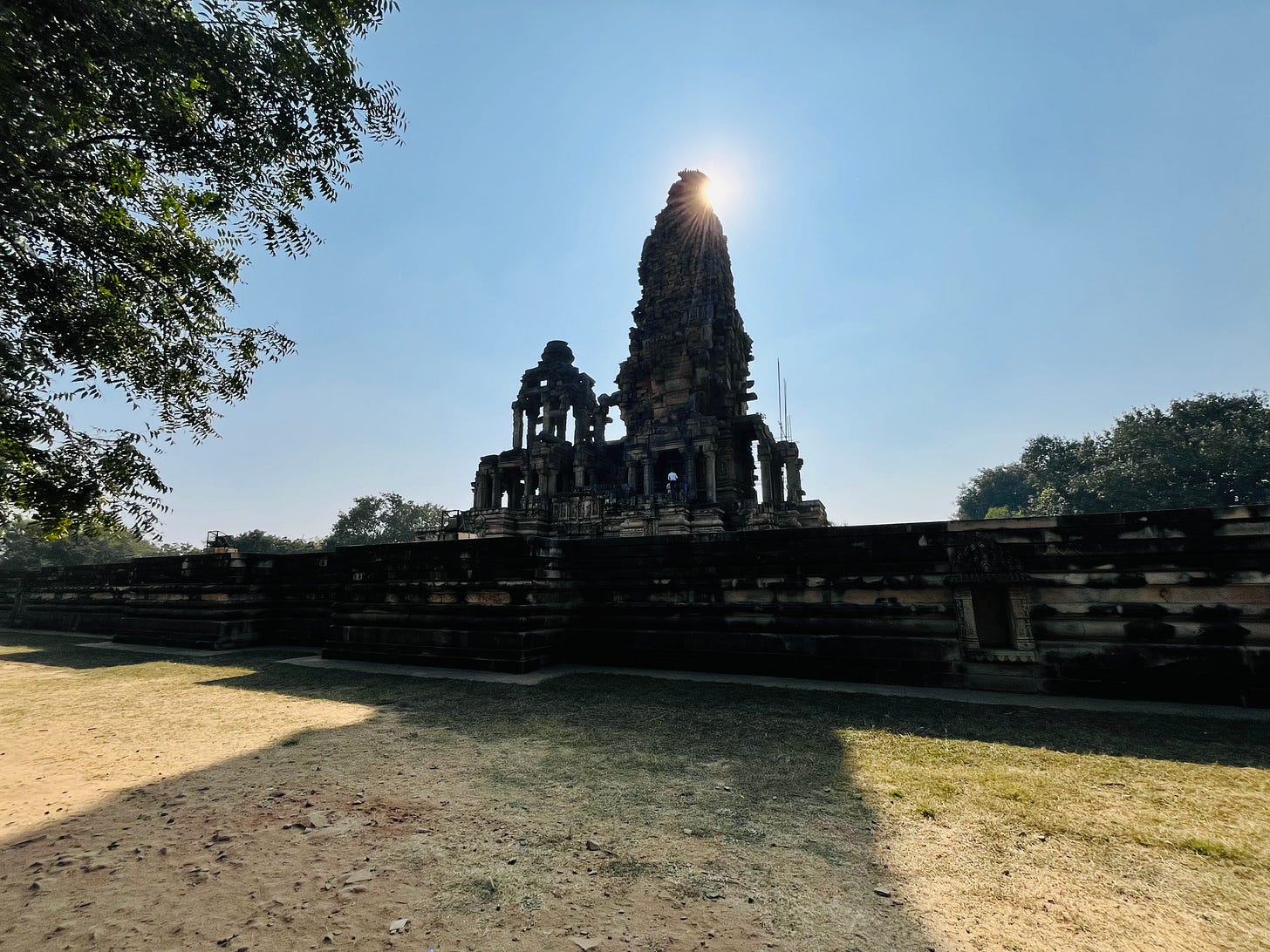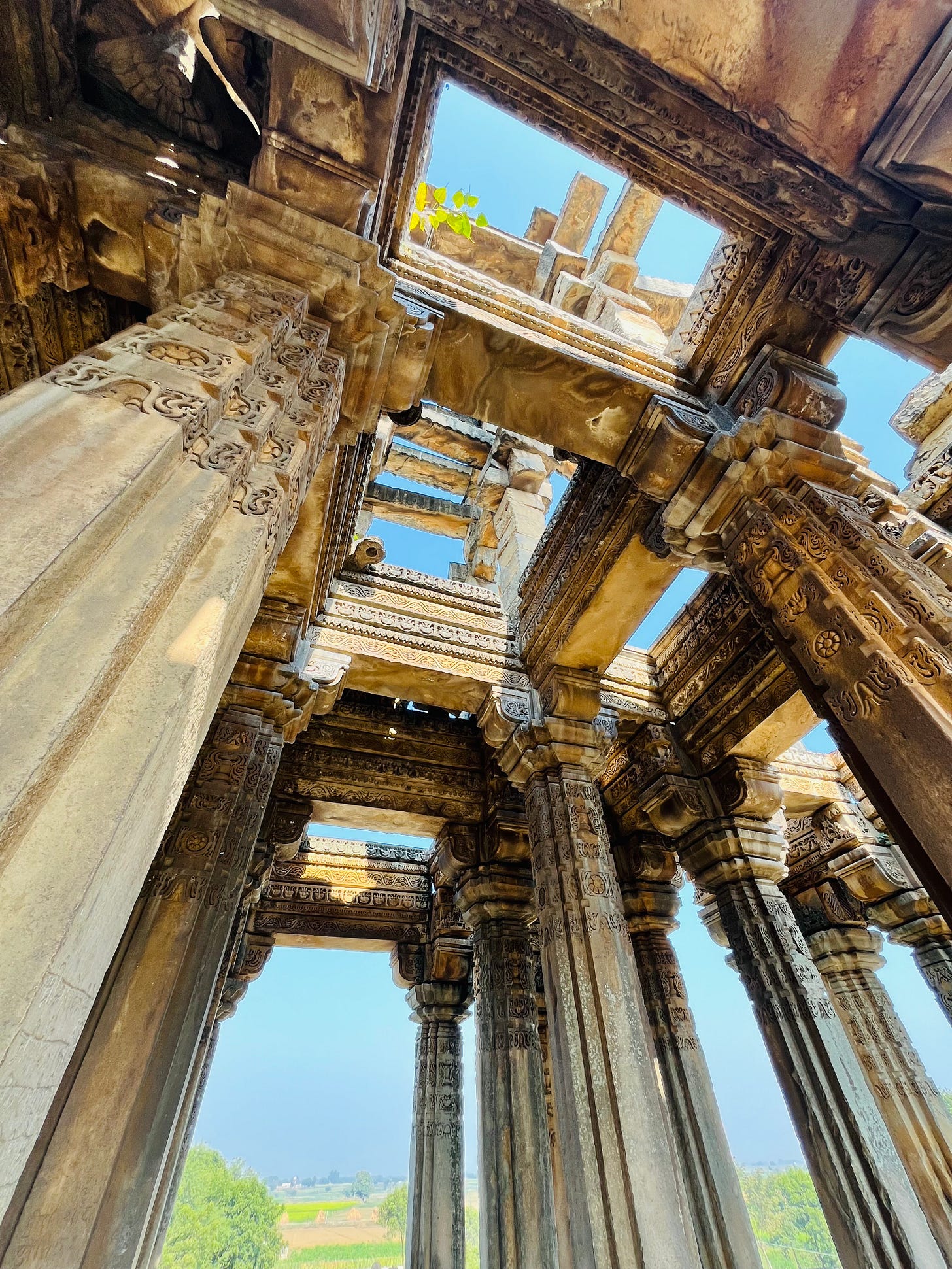The Kakanmath temple, a hauntingly beautiful edifice of 10th-century architectural ambition, stands as a testament to the grandeur of the Kachchhapaghata dynasty in Madhya Pradesh.

Nestled in the heart of Morena district, this temple is an enigma, an ode to both the divine and the mortal quest for immortality through stone. Its towering spire, which pierces the vast sky, whispers stories of a time when artistry was an act of devotion and architecture, a dialogue with eternity.
History
Built around the 11th century during the reign of King Kirttiraja, a ruler of the Kachchhapaghata dynasty, Kakanmath serves as an enduring emblem of the dynasty’s ascendancy.
The temple’s name, intriguingly, has layers of local lore attached. Some believe it to be named after Queen Kakanavati, the monarch’s consort, while others see it as a tribute to a bygone deity whose spirit lingers in the very stones of this sanctuary.
Its origin, shrouded in mystery, fuels speculation—was it a temple for Shiva, a shrine that once echoed with the resonant chants of Vedic hymns, or perhaps an architectural statement of piety and power?
What is certain, however, is that its construction required unparalleled skill, labor, and resources, suggesting not only immense royal patronage but also the enduring faith of its creators.
Architecture
The temple, though in partial ruin today, is an awe-inspiring example of Nagara-style architecture. Its sanctum sanctorum (garbha griha) rises with a shikhara that once reached nearly 100 feet, creating a pyramidal crescendo of carved stone.
The intricate detailing on the walls—floral motifs, celestial beings, and mythical creatures—speaks of a time when sculpture was a sacred craft.
Despite the ravages of time and nature, the sheer symmetry of the structure is spellbinding.
Massive stone blocks, some weighing several tons, were ingeniously stacked without the use of mortar, defying gravity and logic. This has led to whispers of divine intervention or advanced techniques lost to history.
The mandapa, now largely collapsed, once housed a series of intricately carved pillars, each a visual chronicle of the era’s artistic and spiritual ethos.
The sculptures narrate tales from Hindu mythology, with deities, apsaras, and geometric precision harmonizing in a breathtaking dance of stone.
The temple’s east-facing orientation, a common feature in Hindu temple architecture, ensures that the first rays of the sun illuminate the sanctum, a celestial connection that reminds us of its creators’ cosmic vision.
The Present Moment
Today, Kakanmath stands in silent defiance of time. Surrounded by fields and seemingly forgotten by all but a few pilgrims, historians, and intrepid travelers, the temple exudes an almost supernatural presence.

It invites those who venture into its shadow to ponder the transience of human ambition and the enduring power of faith.
In its ruins, one finds not just decay, but resilience—a reminder that while dynasties fade and stories are forgotten, the art they birth carries echoes of their glory.
For the wanderer and seeker, Kakanmath is not merely a destination; it is a dialogue with history, a place where the stones themselves seem to breathe the memories of a bygone world.









The first photograph is superb, sun peeking from the top